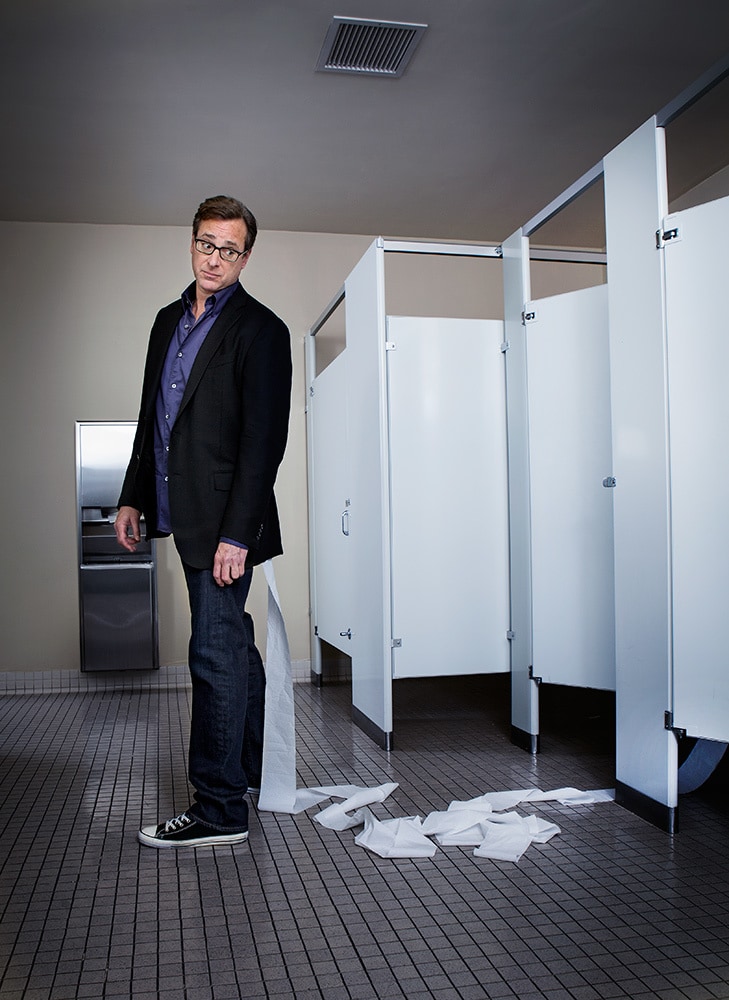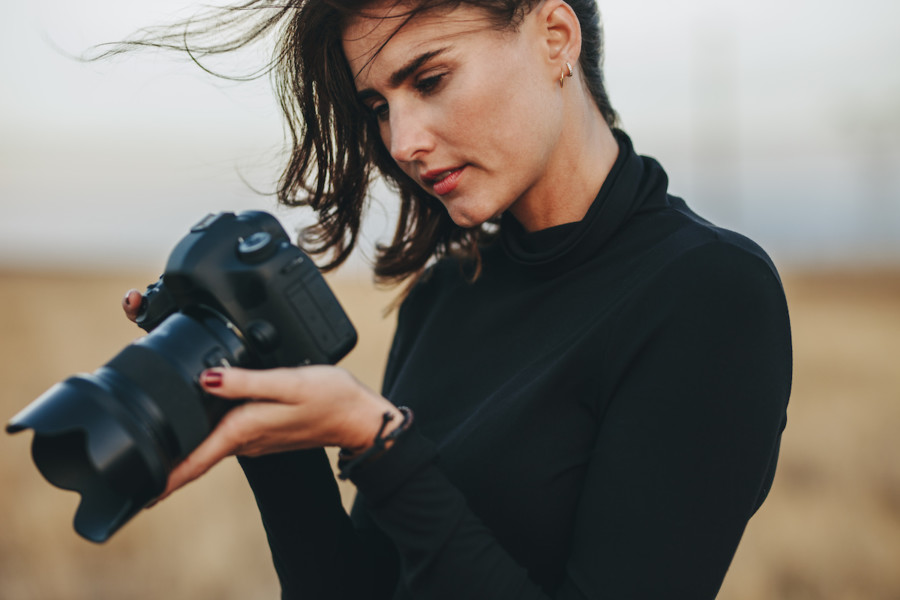Share
This Photographer’s Minimum Price is Zero*
Natalie Brasington is a New York-based advertising and entertainment photographer who shoots for a variety of clients including Comedy Central, Pan...

Natalie Brasington is a New York-based advertising and entertainment photographer who shoots for a variety of clients including Comedy Central, Pantene, DirecTV, Details and Rolling Stone. She recently spoke about pricing at a PhotoShelter roundtable discussion, and we were intrigued by her approach and outlook.
Q: You’re a successful photographer with jobs that range into the tens of thousands of dollars. Yet, you said that your minimum fee is zero, and then talked about “knowing what your end game is,” and how a zero fee shoot support that. Can you elaborate?
It’s important to me to think long term. I have a sense of where I want my career to go and what kind of pictures I’d like to be well-paid to take. I have a sort of “dress for the job you want” mindset when deciding what jobs to take.
I do want to quickly note the difference in a low-budget job and a ripoff. If I sense an “undercut” situation where a client is just being cheap to see if they can get “anyone” who will do it, I will likely run, if I can’t reshape the situation into one that I want to work.
I make a mental distinction between “value” and “pricing”. If a job has great value to me – if I get to collaborate and pitch creative direction, if the subject is someone I want to work with, if the idea fits my aesthetic, if there are other great creatives attached to the project, then I am more likely to be flexible on price.
I think every working photographer also takes jobs that “pay the bills”, at every level of the game. But, the photographers who I admire – they take the jobs that help define who they are and use that momentum to push their careers in a direction that interests them and is lucrative. If it’s something they want to shoot, they shoot it. At times I have taken part of my fee and applied it to the production budget to make the shoot fit my standards.
My hope is that anyone looking at my website can’t distinguish between the jobs that were well funded and the ones that I begged, borrowed and stole to make happen. I know what I want long-term and I ask myself every time I get a job offer, “is this a job that will help me get there?” When the answer is “yes” I take the job.
Q: Can you give me a few examples where the calculated risk of zero paid off for you?
My very first professional job was working on a MySpace TV show that Amy Schumer was hosting. We hit it off and she asked me to photograph some play posters for the theatre company she co-founded [called] “The Collective”. We didn’t even talk money, I didn’t expect to be paid, which was perfect since the company was just starting out and really didn’t have a lot of funding quite yet. I just wanted to work more with this incredible woman so I said yes without a second thought. A few months after we first worked together, Amy put me in touch with fellow comedian Anthony Jeselnik who needed a cover image shot for his Comedy Album. This whole sequence of events led me to Comedy Central and since then I have had amazing experiences working with many comedians I love, several of whom were exceedingly generous in posing for my ongoing personal project of Comedians in Public Bathrooms.
I have this natalie-ism, “Sometimes the best thing to know is not any better”. This was one of those moments. I didn’t know what to expect or how to run a business yet and in an ironic way I’m really grateful for that. I just knew what pictures I wanted in my book.
I took some calculated risks, aligned myself with talented artists, and I’m so glad I did.
Q: Do you have examples, where zero/reduced fee didn’t work? How do you determine the risk?
A couple summers ago I directed a music video that will probably never see the light of day. I hired a great DP and was very frank and honest about my level of experience. I used every dollar of the budget on the production and then when we went into over-time I had to pay crew out of pocket for the overages. I paid my own money to work for free on a project that will probably never actually get made. What I learned is that I cannot always serve champagne on a beer budget and distinguishing between the times when that feat can be pulled off and when it can’t is hugely important. I learned that sometimes you need to tell your client “No, we just can’t afford that… but here’s what we CAN do on that budget”.
Q: You’ve had celebrities ask for free usage of your images for PR and you turned around and asked them to promote your non-profit causes. Can you talk about this approach to “bartering” and the headache of tracking usage for something like this (i.e. it’s not worth it for $400).
There are times when I know what someone is able and willing to pay for my work and that number is under-value, so I look to work the situation in way that makes us all feel valued. In one case I was asked about usage of PR images from a shoot and instead of sending a licensing fee structure, I asked that celeb to help promote the Art Start Portrait Project on social media. I have also gladly given images to comedians to use for self promotion and in exchange asked that they pose in my personal project, rather than having to bartering with their management in an uncomfortable way.
Q: When someone comes to you with a estimate request for something you’ve never done before (e.g. a novel usage like in-elevator advertising), how do you go about determining price?
I talk to my wonderful agents, Mat Coogan and Darren Jordan of Anyway Reps. They work with great photographers and clients and have a wealth of experience pricing all sorts of jobs.
Q: What is the value of personal projects?
They are invaluable. Essential. I encourage everyone to work on personal projects. How else will your clients know what is in your heart and soul and what type of images you really want to be making? Personal work has led me to some really wonderful jobs. I think it’s important to be constantly making new work, so you always have something to show your clients that they haven’t seen yet and so they can think of you and your skill set in new ways.
Q: What was the genesis of Art Start?
In the Spring of 1991, a handful of artists got together with homeless kids to make art in New York City. For the past 25 years Art Start has paired professional artists with youth living in homeless shelters, working through alternative to incarceration programs, or who are otherwise underserved. My husband, fellow photographer David Johnson, and I met Art Start when we had a work/shoot space next door to their studio back in 2008. We began volunteering with them taking pictures of youth in various programs and mentoring Art Start Youth through the E.A.R program. In 2013 Johanna De Los Santos and Hannah Immerman, the Art Start Executive Directors, reached out to us about volunteering to take some family portraits inside a shelter where they were conducting workshops. We both said yes, and I went on to pitch a full-scale advocacy effort, what has become The Art Start Portrait Project. The project pairs professional photographers and hair and makeup artists with Art Start youth and families to make make images that show how they wish to be SEEN.
Q: How do you value your work with non-profits?
Also invaluable. I have a tiny little scope of influence in this world and working with Art Start is a way that I get to live my values. I hope that with many years of hard work I can be thought of as a prolific voice in the world of photography. I am also passionate about diversifying the industry. We need more women and people of color making decisions and making images. And, honestly, all of the white men I know who work in photography agree with me. It’s all of our responsibility to exercise our influence and live our values. Talk is cheap. Take action.
I was mystified the first time I stepped on to a professional photography set. I couldn’t believe this world existed and that I could be part of it. I am grateful for the opportunity to expose young artists to this world I love so much and let them know it is theirs for the taking, they belong in the driver’s seat as much as I or anyone else does. Those reading this who agree with me, I encourage you to take action. Reach out to non-profits (hint hint Art Start art-start.org) about extending opportunities to the youth they serve. Ask the program directors what barriers their youth experience and have an action plan to break those barriers. Simple things like providing a metro card to an intern can open doors that otherwise would remain closed. We at Art Start believe that Art Saves Lives. If you do to, take action. If you’re not in a position to mentor youth, you can make programs like this possible by contributing to Art Start’s monthly donor campaign. Art Start can plan more robust programing for youth knowing that they have your continued support. http://www.art-start.org/monthly-donor/
Interview has been condensed and edited.







